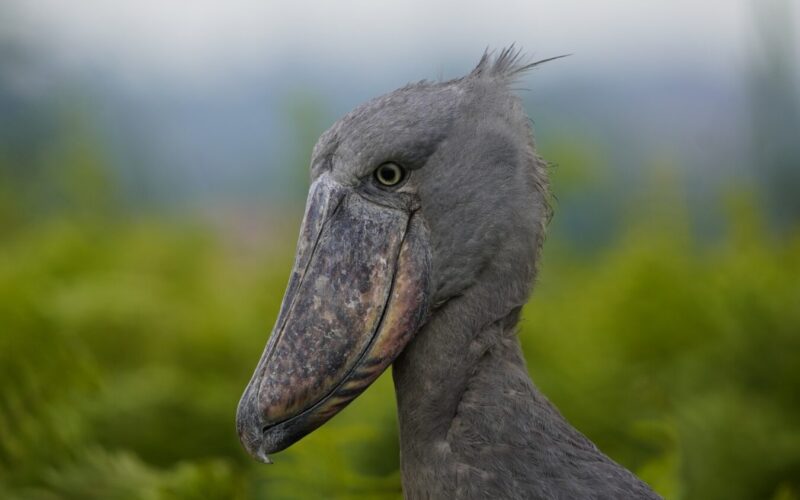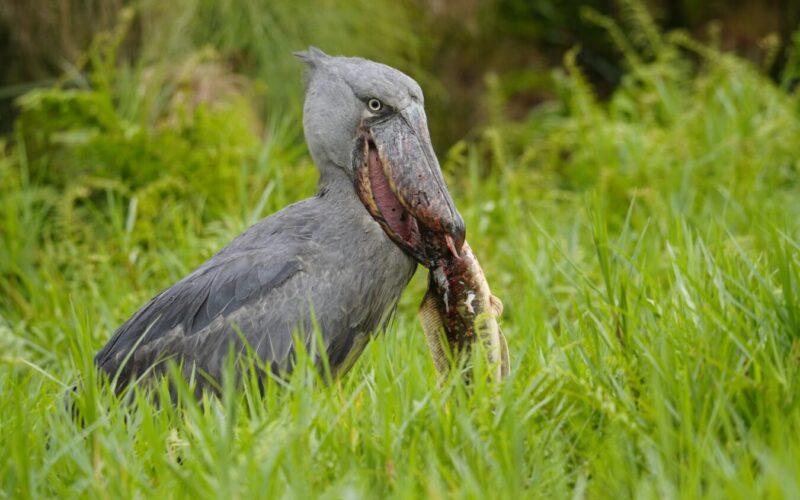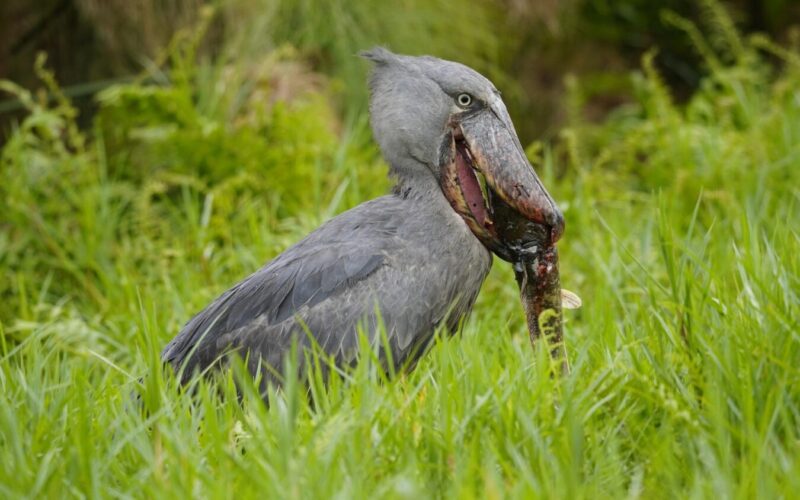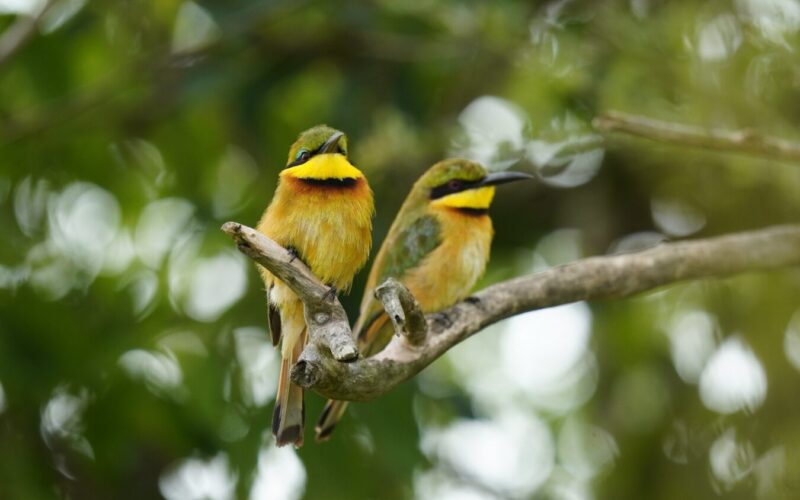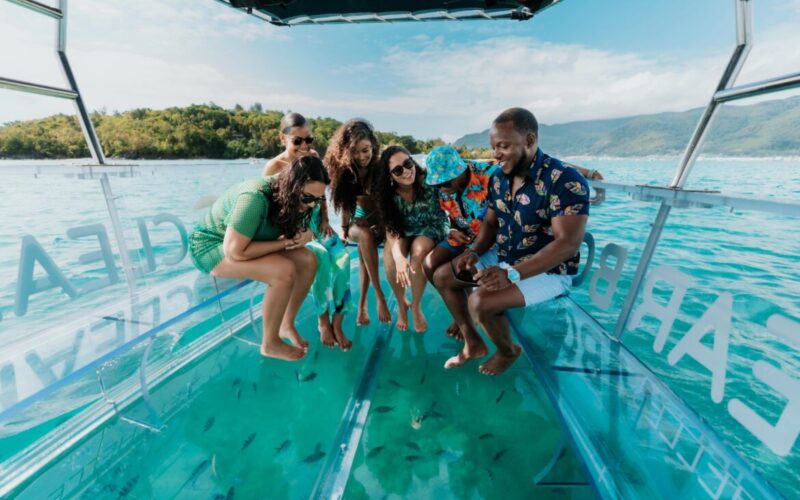
Kenya Safari vs. Tanzania
September 30, 2025
What is the Best Time of Year to Go to Tanzania for a Safari?
October 1, 2025Kenya Wildlife Safari vs Tanzania Wildlife Safaris: Which Safari is Better?
Africa offers many incredible destinations for wildlife enthusiasts, but few places compare to the timeless allure of Kenya Wildlife Safari vs Tanzania Wildlife Safaris. These two East African neighbors have become synonymous with classic African adventures, where sweeping savannahs, dramatic landscapes, and abundant wildlife set the stage for unforgettable journeys. Choosing between a Kenya Safari and a Tanzania Safari requires careful thought because both destinations deliver unique experiences that speak to different traveler preferences, budgets, and adventure styles.
A Kenya Safari offers affordability, easier access, and diverse activities, making it appealing to first-time travelers, families, and those seeking cultural immersion alongside wildlife experiences. Kenya’s smaller and more accessible parks like the Masai Mara, Amboseli, and Samburu provide quick access to the Big Five and excellent infrastructure. This makes Kenya a convenient choice for travelers who want a balance between comfort, adventure, and affordability.
Which Safari is Better
On the other hand, Kenya Wildlife Safaris vs Tanzania Wildlife Safaris, Tanzania safaris embody the very essence of exclusivity and wilderness. A Tanzania Wildlife Safari stretches across vast, untamed landscapes like the Serengeti National Park and Ngorongoro Crater, where large herds, iconic predators, and pristine nature thrive. The country is renowned for its longer Great Migration season, immersive Tanzania Walking Safaris, and iconic backdrops such as Mount Kilimanjaro. These factors create an unrivaled sense of adventure that appeals to travelers seeking a deeper connection with Africa’s wild beauty.
Both Kenya and Tanzania offer high-quality safaris, excellent wildlife viewing, and cultural experiences that enrich the journey. The real question is not whether Kenya or Tanzania is better but rather which destination aligns best with your priorities. Do you value budget-friendly options and cultural encounters, or do you prefer exclusivity and vast, untouched wilderness? With Deks Safaris & Tours guiding the journey, travelers can confidently explore either option, knowing their safari will be personalized, authentic, and unforgettable.
Why Consider a Kenya Safari?
Accessible, Affordable, and Full of Cultural Experiences
A Kenya Safari remains one of the most accessible and popular options for travelers seeking an African wildlife adventure. The country’s extensive tourism infrastructure, combined with well-organized national parks and reserves, makes planning straightforward and stress-free. Kenya’s proximity to major international airports such as Nairobi and Mombasa ensures convenient arrival and departure, reducing long travel times that can deter travelers in larger countries. This accessibility positions Kenya as an ideal choice for first-time safari-goers, families, and those seeking a mix of wildlife, culture, and adventure within a manageable timeframe.
Budget-Friendly Safari Options
Kenya Safaris are generally more affordable compared to Tanzania, particularly for budget and mid-range travelers. A typical budget Kenya Safari can start at approximately $150 per person per day, with mid-range packages averaging $300 and luxury options around $600. The variety of accommodations—from budget-friendly tented camps to mid-range lodges—allows travelers to tailor experiences to their comfort preferences and financial plans. Group safari options further reduce costs, making Kenya accessible to travelers who wish to experience Big Five sightings without the premium price tag of more remote destinations.
Rich Wildlife Concentrations
Kenya is home to numerous parks with abundant wildlife, including the Big Five—lion, leopard, elephant, buffalo, and rhino. The Masai Mara, often considered Kenya’s crown jewel, hosts dramatic river crossings during the Great Migration, providing a breathtaking spectacle for photographers and wildlife enthusiasts alike. Amboseli National Park offers unparalleled views of Mount Kilimanjaro along with large elephant herds, while Samburu National Reserve provides opportunities to encounter rare species like the reticulated giraffe and Grevy’s zebra. Kenya Safaris excel in delivering concentrated wildlife encounters, allowing travelers to experience diverse animal sightings in shorter distances and less time.
Immersive Cultural Experiences
Kenya also emphasizes cultural engagement alongside wildlife safaris. Visitors can interact with Maasai, Samburu, and other indigenous communities, witnessing traditional ceremonies, learning about age-old customs, and understanding how local populations coexist with wildlife. Lodges near these communities often offer guided cultural tours, artisan workshops, and opportunities to participate in traditional cooking or bead-making, enriching the safari beyond wildlife observation.
Why Consider a Tanzania Safari?
Immersive Wilderness, Iconic Landscapes, and Exclusive Wildlife Experiences
A Tanzania Safari represents the pinnacle of East African wildlife adventure, offering travelers an immersive experience in vast, pristine landscapes. Unlike smaller, more crowded parks, Tanzania’s national parks and reserves span enormous areas, from the rolling plains of the Serengeti to the dramatic Ngorongoro Crater and the remote wilderness of Ruaha National Park. This sense of scale allows for unparalleled wildlife encounters, including the Big Five, predators like lions and leopards, and rare species such as African wild dogs. Tanzania Safaris are particularly well-known for providing extended opportunities to witness the Great Migration, one of the most extraordinary wildlife spectacles on the planet.
Exclusive and Serene Safari Experiences
Tanzania Safaris emphasizes exclusivity and authenticity, often catering to small groups or private tours. The country’s deliberate strategy of low-density tourism ensures fewer crowds, creating serene experiences where travelers can connect deeply with nature. Tanzania Walking Safaris add a unique dimension, allowing guests to explore savannahs, forests, and riverine areas on foot under the guidance of highly trained naturalists. Walking safaris in Tanzania offer intimate encounters with flora and fauna, as well as insights into animal behavior, tracking techniques, and conservation efforts, which cannot be replicated in standard vehicle-based game drives.
Iconic Parks and Wildlife Diversity
The Serengeti National Park is the centerpiece of Tanzania Wildlife Safaris, hosting the annual Great Migration of wildebeest and zebras. Ngorongoro Crater, a UNESCO World Heritage Site, presents a dramatic caldera teeming with wildlife, offering exceptional opportunities for Big Five sightings in a single day. Nyerere National Park (formerly Selous) and Ruaha National Park provide remote, less-visited wilderness with large elephant herds, predator sightings, and breathtaking landscapes. Each park provides a distinct safari experience, from riverine ecosystems to savannah plains, enhancing Tanzania’s reputation as a top-tier safari destination.
Cultural Experiences Near Tanzania Safari Lodges
Tanzania Safaris also integrates authentic cultural encounters. Travelers can visit Maasai villages near Ngorongoro, interact with Hadzabe hunter-gatherers, or experience Datoga traditions, gaining insight into indigenous lifestyles that have coexisted with wildlife for centuries. Many safari lodges provide guided visits, traditional performances, and artisan workshops, allowing guests to immerse themselves fully in local culture without disrupting daily life.
Comparing Costs, Logistics, and Seasonal Considerations Between Kenya and Tanzania Safaris
Understanding Safari Costs
When planning a Kenya Safari versus a Tanzania Safari, cost considerations often play a pivotal role. Kenya generally provides more budget-friendly options, with daily rates starting around $150 for budget safaris, $300 for mid-range packages, and $600 or more for luxury experiences. Tanzania Safaris, on the other hand, are typically higher, beginning around $250 per person per day for budget options and exceeding $1,000 per day for premium, all-inclusive experiences. Factors influencing these differences include park entry fees, infrastructure, and the exclusivity of safari lodges. Tanzania invests heavily in conservation, which directly increases costs but guarantees world-class wildlife protection and small-group experiences. Kenya’s larger tourism network allows for economies of scale, lowering the barrier for budget travelers.
Logistics and Accessibility
Logistics significantly affect both the safari experience and costs. Kenya’s parks, including the Masai Mara, Amboseli, and Lake Naivasha, are relatively compact and accessible from major hubs like Nairobi and Mombasa. Travelers can reach parks by short road transfers or domestic flights, often within a few hours. Tanzania, however, covers a much larger area. Reaching parks such as the Serengeti, Ruaha, or Nyerere National Park typically involves longer overland drives or internal flights. While these logistics can raise expenses, they also contribute to Tanzania’s exclusivity, providing visitors with a more serene and less crowded safari experience.
Seasonal Considerations
Seasonality strongly influences both cost and wildlife viewing opportunities. The dry season, from June to October, offers the best wildlife spotting in both countries, particularly for Tanzania Wildlife Safaris in the Serengeti, where predators and migrating herds gather. Peak season also increases prices due to higher demand. The wet season, from March to May, tends to reduce costs significantly as lodges and camps offer discounted rates. While wildlife may be more dispersed during this period, the scenery becomes lush, birdwatching peaks, and the visitor experience is quieter and more intimate. Choosing the right season balances budget considerations with wildlife expectations.
Value Considerations
Kenya Safaris excels in accessibility, cost efficiency, and rich cultural interactions with communities like the Maasai and Samburu. Tanzania Safaris, although more expensive, offer extended Great Migration opportunities, remote wilderness, walking safaris, and immersive cultural experiences with Hadzabe and Datoga communities near iconic parks. Ultimately, travelers weighing costs against unique experiences may find Tanzania’s higher price justified by exclusivity, unparalleled wildlife encounters, and immersive adventure options, particularly for those seeking a once-in-a-lifetime safari that includes Big Five sightings and tailored itineraries.
Kenya Wildlife Safari vs Tanzania Wildlife Safaris Activities, Walking Safaris, and Gorilla Trekking Add-Ons
Immersive Wildlife Game Drives
Game drives remain the cornerstone of both Kenya and Tanzania Wildlife Safaris. In Kenya, carefully guided drives through the Masai Mara, Amboseli, and Nakuru National Park provide excellent opportunities to witness the Big Five and large herds of herbivores within accessible landscapes. Tanzania Safaris, particularly in the Serengeti, Ngorongoro Crater, and Tarangire, offer expansive plains and remote wilderness, allowing travelers to observe wildlife in less crowded settings.
Both destinations emphasize small-group, guided 4×4 safaris with expert trackers, ensuring safe and informative wildlife encounters. Tanzania Walking Safaris provide additional depth by taking guests off-road, fostering a connection with the ecosystem that traditional game drives cannot replicate. These excursions encourage close observation of flora, smaller mammals, and birdlife, enriching the overall safari experience.
Walking Safaris: Intimate Encounters
Walking Safaris in Tanzania, particularly in Nyerere National Park and the Serengeti’s northern corridor, deliver a uniquely immersive experience. Guests traverse the savannah alongside trained guides who share insights on animal behavior, spoor tracking, and ecological systems. Unlike vehicle-based game drives, walking safaris promote active engagement with the environment, allowing visitors to appreciate subtle wildlife movements, learn survival strategies of African predators, and observe smaller yet vital species, such as reptiles and insects, that contribute to ecosystem balance.
Tanzania Walking Tours complement traditional safaris by creating opportunities for deeper appreciation of the bush, while maintaining safety through expert guidance and strict protocols. Kenya also offers walking excursions, often near Masai Mara conservancies, but Tanzania’s vast landscapes provide longer, more secluded, and exclusive walking routes.
Gorilla Trekking Add-Ons
Many travelers extend their Tanzania Safari Holidays with Gorilla Trekking in neighboring Uganda or Rwanda, creating a bucket-list combination of savannah and rainforest wildlife experiences. This add-on allows guests to encounter mountain gorillas in their natural habitat, providing a contrast to the open plains of the Serengeti. Although it increases the overall cost, it significantly enhances the value and uniqueness of a safari itinerary. Gorilla Trekking is highly regulated, with visitor numbers limited per day to preserve habitat integrity and ensure safety. Combining Tanzania Safari and Gorilla Trekking offers a rare, once-in-a-lifetime opportunity to experience both Africa’s iconic Big Five and endangered primates, appealing to wildlife enthusiasts seeking comprehensive and memorable African adventures.
Additional Activities
Both Kenya and Tanzania Safari Holidays feature optional excursions to enrich the journey. Hot air balloon safaris over the Serengeti or Masai Mara allow panoramic views of migration herds, while cultural experiences with Maasai, Hadzabe, or Datoga communities introduce visitors to indigenous traditions, hunting practices, and local rituals. In Tanzania, park-specific activities include river safaris, boat rides in Selous/Nyerere National Park, and night drives that provide opportunities to observe nocturnal species. By integrating walking safaris, guided game drives, cultural immersion, and Gorilla Trekking add-ons, travelers create a layered, unforgettable safari itinerary that combines adventure, education, and unique wildlife encounters.
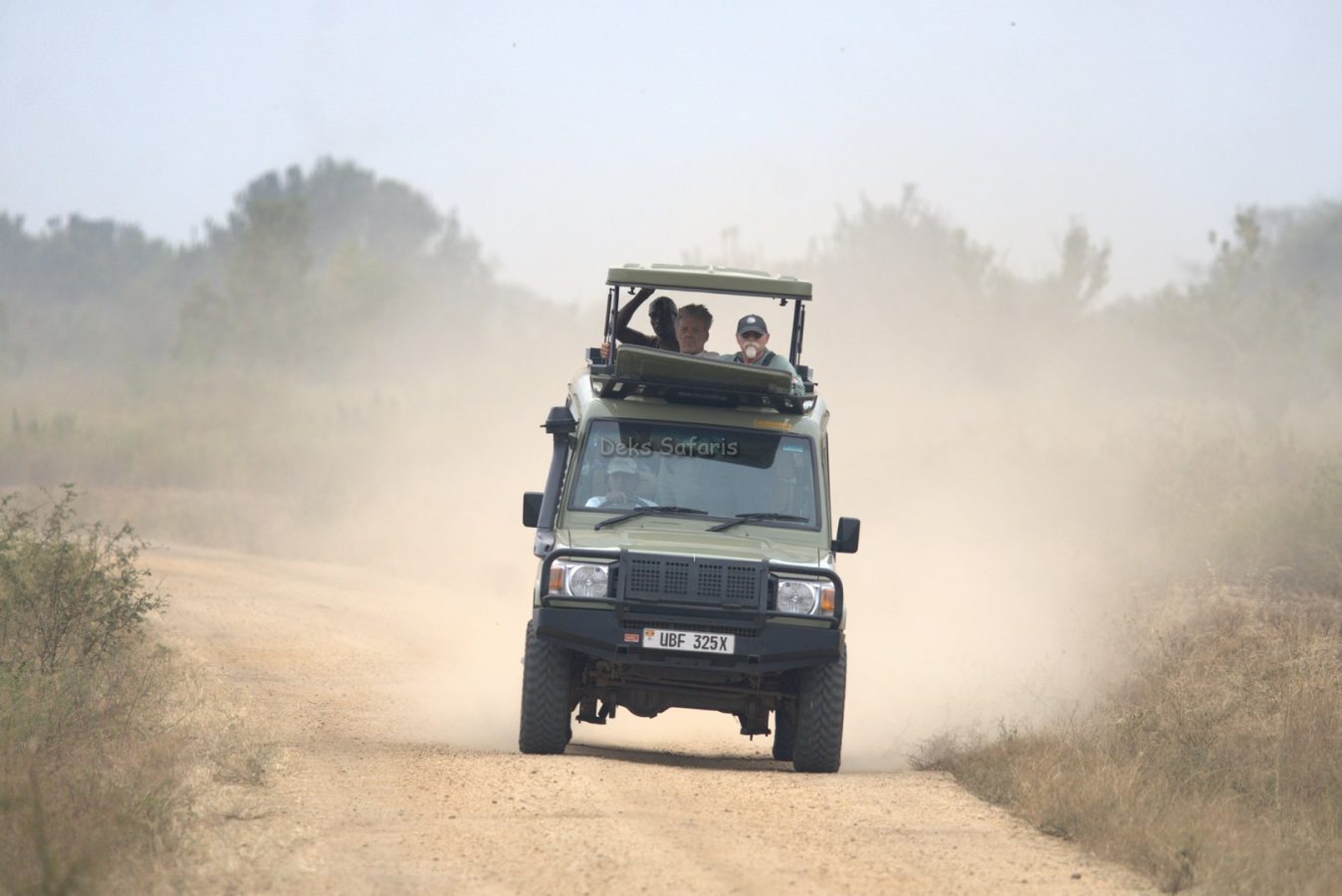
Kenya Wildlife Safari vs Tanzania Wildlife Safaris
Cultural Tourism and Lodge-Based Experiences
Immersive Cultural Encounters
Cultural tourism adds a rich dimension to both Kenya and Tanzania Safaris, transforming wildlife adventures into holistic experiences. In Kenya, safaris often include guided visits to Maasai and Samburu communities, where travelers witness traditional dances, learn beadwork techniques, and gain insight into pastoralist lifestyles. These cultural excursions provide authentic perspectives on local customs, spirituality, and land stewardship, complementing the visual spectacle of wildlife game drives.
Tanzania, meanwhile, offers encounters with the Hadzabe hunter-gatherers, Datoga pastoralists, and Maasai people near the Ngorongoro Crater, allowing visitors to observe unique hunting practices, medicinal plant knowledge, and storytelling traditions. Cultural tours are often paired with small-group guided walks or conservancy visits, ensuring respectful and ethical interactions while promoting cultural preservation and community engagement. These experiences enhance Tanzania Safari Holidays by connecting guests to both people and nature, deepening appreciation of East Africa’s heritage.
Lodge-Based Experiences and Luxury Stays
Safari lodges in Kenya and Tanzania complement cultural experiences, blending comfort with immersion in natural landscapes. In Tanzania, luxury lodges and tented camps in the Serengeti, Tarangire, and Ngorongoro Crater provide panoramic views, fine dining, and eco-conscious amenities while offering immediate access to wildlife. Many lodges incorporate cultural activities directly on-site, such as Maasai storytelling evenings, guided bush walks with local trackers, and village visits.
Kenya’s lodges, from the Masai Mara to Amboseli, emphasize family-friendly facilities, private guides, and curated excursions, creating seamless connections between wildlife viewing and cultural education. Tanzania Walking Safaris often depart from strategically located lodges, enabling guests to explore remote areas safely while returning to high-quality accommodations. By combining lodge comfort with culturally immersive programs, safari-goers gain a more comprehensive understanding of local ecosystems and communities, enriching every aspect of their journey.
Integrating Wildlife, Culture, and Hospitality
The interplay of wildlife encounters, cultural tourism, and lodge-based hospitality defines premium safari experiences. Travelers can observe elephants near lodge grounds, participate in traditional craft workshops, and enjoy meals prepared from locally sourced ingredients. Both Kenya and Tanzania focus on sustainable tourism practices, ensuring that cultural and wildlife interactions support conservation and local economies.
In Tanzania, lodges often collaborate with community projects, allowing guests to contribute indirectly to conservation efforts while enjoying exclusive and private safari experiences. These combined elements luxury lodging, cultural immersion, and immersive wildlife safaris position Tanzania Safari Holidays as unparalleled adventures, offering travelers holistic engagement with East Africa’s natural and cultural landscapes.
Safari Costs, Budget vs. Luxury Options, and Seasonal Pricing for Kenya Wildlife Safari vs Tanzania Wildlife Safaris
Understanding Tanzania Safari Costs
Tanzania Safaris provides world-class wildlife experiences, but costs can vary widely depending on the type of safari, level of accommodation, and time of year. Budget Tanzania Safaris typically start around $250 per person per day and include basic lodges, shared game drives, and essential park fees. Mid-range safaris, averaging $400–$600 per person per day, often provide comfortable tented camps, private guides, and included meals while offering more flexibility for activities such as walking safaris or short excursions to nearby cultural sites. Luxury Tanzania Wildlife Safaris, exceeding $1,000 per person per day, feature premium lodges, exclusive safari vehicles, hot-air balloon rides, gourmet dining, and personalized itineraries. The price also reflects Tanzania’s high operational costs, remote park logistics, and conservation funding, which collectively ensure sustainable wildlife tourism.
Seasonal Pricing and Timing
The cost of a Tanzania Safari heavily depends on seasonal considerations. The dry season, from June to October, represents the peak period for Tanzania Wildlife Safaris, with excellent wildlife visibility, clear skies, and access to the Great Migration in the Serengeti. Prices peak during this high season due to demand and limited availability of luxury lodges. Conversely, the wet season, from March to May, provides lower rates across all safari types.
While rainfall may slightly hinder wildlife spotting, lodges often offer discounted packages, and the landscape becomes lush and vibrant, attracting migratory birds and unique photographic opportunities. The short rains in November and December offer a secondary opportunity for cost-conscious travelers to enjoy fewer crowds and moderate wildlife activity.
Comparing Budget, Mid-Range, and Luxury Experiences
Budget Tanzania Safaris are ideal for travelers prioritizing wildlife sightings over luxury, with simple accommodations and shared vehicle tours. Mid-range options provide a balanced experience with upgraded lodges, enhanced comfort, and guided game drives, offering access to walking safaris in Tanzania and optional boat safaris in areas like Nyerere National Park. Luxury safaris cater to travelers seeking exclusivity, privacy, and highly curated wildlife encounters.
These packages often integrate Tanzania Safari and Gorilla Trekking extensions, private guides, and cultural immersion activities near lodges, creating a comprehensive and unforgettable experience. Ultimately, understanding the relationship between cost, inclusions, and seasonal timing allows travelers to plan Tanzania Safaris that suit their preferences and budgets while maximizing value and adventure.
Travel Tips, Packing Advice, and Safety Considerations for Tanzania Safaris
Essential Travel Tips
Planning a Tanzania Safari requires thoughtful preparation to maximize comfort, safety, and wildlife experiences. Booking your safari in advance ensures access to prime lodges, guides, and seasonal wildlife spectacles, such as the Serengeti Great Migration or the Ngorongoro Crater Big Five sightings. Travelers should confirm vaccinations, travel insurance, and visa requirements before departure. Using reputable tour operators, such as Deks Safaris & Tours, guarantees expert guidance, reliable logistics, and access to off-the-beaten-path wildlife locations. Internal flights between parks save time and reduce long road transfers, although overland safaris offer scenic routes and opportunities to visit remote cultural communities.
Packing Essentials
Packing wisely ensures comfort and practicality during Tanzania Walking Safaris, game drives, and lodge stays. Neutral-colored clothing, preferably lightweight and breathable, is recommended for blending with the environment. Sturdy walking shoes, hats, and sunglasses protect against sun and uneven terrain, while warm layers are essential for early morning game drives and higher-altitude areas like Ngorongoro. Binoculars, cameras with telephoto lenses, and field guides enhance wildlife observation. Personal items such as insect repellent, sunscreen, and reusable water bottles improve convenience and health during safari excursions. Optional items for luxury safaris include formal evening wear for lodge dinners or balloon safari experiences.
Safety Considerations
Tanzania Safaris maintains high safety standards, especially when using licensed guides and reputable lodges. Staying inside vehicles during game drives prevents dangerous wildlife encounters, and following guide instructions during walking safaris ensures safe wildlife observation. Travelers should carry necessary medications, respect park rules, and maintain hydration to prevent heat-related issues. For children or families, many lodges offer specialized accommodations and supervised activities, ensuring both safety and enrichment. By combining proper preparation, practical packing, and adherence to safety guidelines, Tanzania Safari Holidays deliver secure, immersive, and unforgettable wildlife and cultural experiences.
Frequently Asked Questions (FAQs) About Kenya Wildlife Safari vs Tanzania Wildlife Safaris
How much does a Tanzania Safari cost?
Tanzania Safari costs vary widely depending on the level of accommodation, length of the trip, and included activities. Budget safaris typically start around $250 per person per day, covering shared lodges or tented camps, game drives, meals, and park fees. Mid-range packages usually range from $400–$600 per person per day, including upgraded lodges, more personalized game drives, and select optional excursions. Luxury safaris can exceed $1,000 per day, offering private guides, exclusive lodges, fine dining, and immersive experiences such as hot-air balloon safaris over the Serengeti. Costs are influenced by season, park selection, internal transfers, and itinerary customization, making early planning essential for securing the best rates.
Is a Tanzania Walking Safari worth the extra cost?
Walking Safaris in Tanzania provide an unparalleled, immersive experience that allows travelers to explore wildlife, flora, and bird species up close. These guided excursions emphasize slow exploration, education about animal tracks, plant ecology, and conservation practices. Walking safaris are typically conducted in smaller groups for safety and intimacy, enhancing the exclusivity of the experience. Compared to vehicle-based game drives, walking safaris often include interpretive guides with local knowledge, which justifies the higher price point. Areas like Nyerere National Park and select regions of the Serengeti offer exceptional walking safari routes that are difficult to replicate elsewhere.
Can I combine Tanzania Safari with Gorilla Trekking?
Yes. Many travelers extend their Tanzania Wildlife Safaris to include Gorilla Trekking in neighboring Uganda or Rwanda. This combination allows guests to witness Africa’s iconic Big Five wildlife while also experiencing mountain gorilla habitats. Gorilla Trekking adds a unique conservation and cultural element to a Tanzania Safari Holiday, including interactions with local communities such as the Batwa people. While the addition increases overall costs, the itinerary becomes a once-in-a-lifetime journey that combines both terrestrial wildlife observation and primate conservation awareness.
What is the best time to go on a Tanzania Safari?
The dry season from June to October provides optimal wildlife viewing, clear skies, and excellent conditions for Tanzania Game Drives and Walking Safaris. Peak migration sightings in the Serengeti and Ngorongoro Crater occur during these months. The wet season (March–May and November–December) offers lower costs, lush landscapes, and abundant birdlife, though some roads may be less accessible. Travelers seeking exclusivity often choose shoulder months to avoid crowds while still enjoying excellent wildlife viewing.
How do budget and luxury Tanzania Safaris differ?
Budget safaris prioritize affordability with shared accommodations, fewer guided activities, and simplified meal plans, while still covering core experiences such as game drives and park fees. Luxury safaris offer private guides, exclusive tented camps or lodges, personalized game drives, and additional experiences such as balloon safaris, night drives, and spa amenities. Both options provide wildlife sightings, but luxury packages emphasize comfort, privacy, and additional cultural or adventure experiences for a fully immersive Tanzania Safari Holiday.
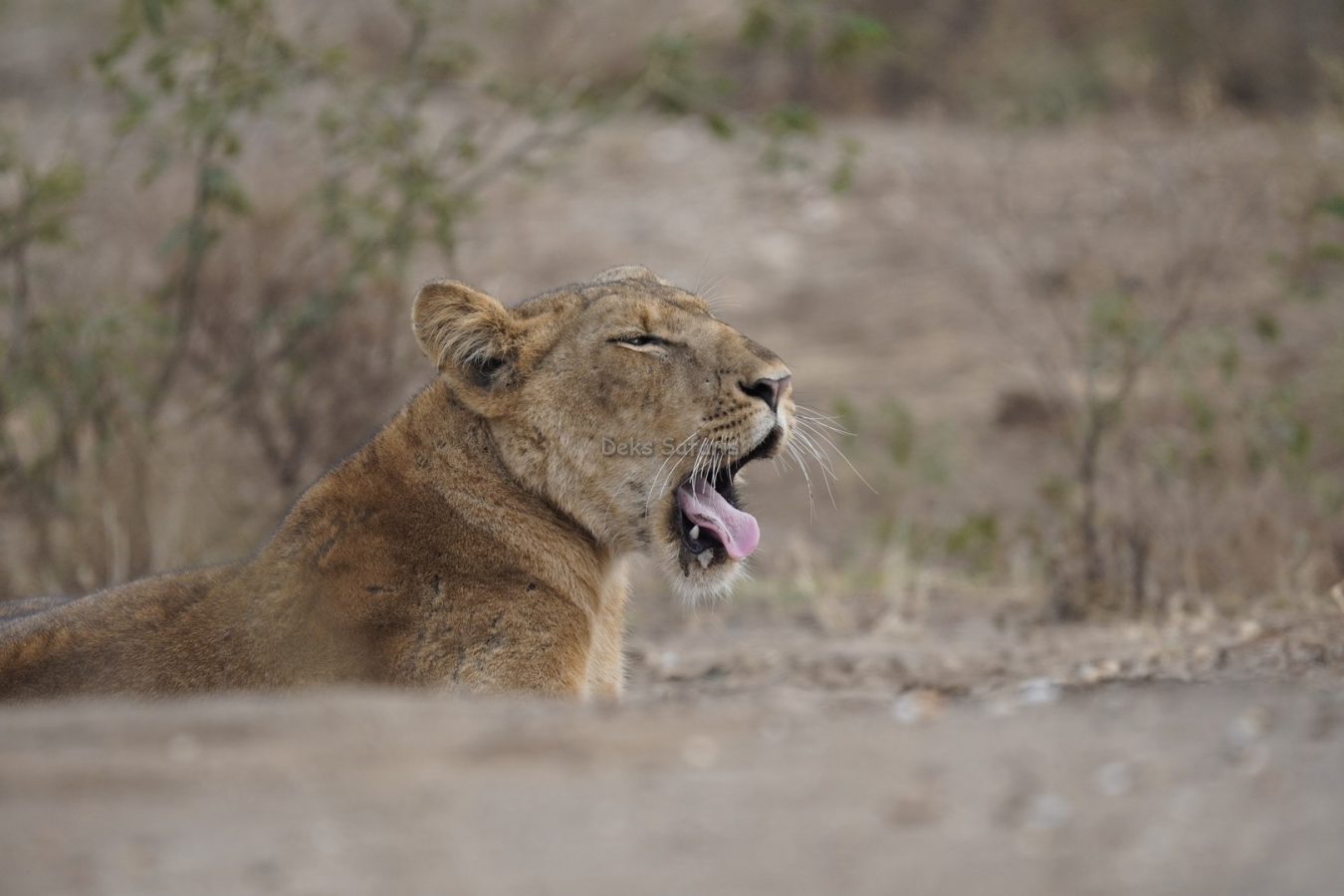
Kenya Wildlife Safari vs Tanzania Wildlife Safaris
Choosing Kenya Wildlife Safari vs Tanzania Wildlife Safaris with Deks Safaris & Tours
A Tanzania Safari with Deks Safaris & Tours offers an extraordinary opportunity to explore Africa’s most iconic landscapes while witnessing unparalleled wildlife spectacles. From the endless plains of the Serengeti to the dramatic caldera of Ngorongoro, Tanzania Wildlife Safaris provide access to some of the densest concentrations of wildlife on the continent, including the legendary Big Five. Beyond wildlife, travelers experience immersive cultural encounters, walking safaris in pristine wilderness, and optional Gorilla Trekking extensions for a multi-dimensional adventure.
Choosing Tanzania over Kenya delivers a more serene, untouched, and exclusive safari experience, with vast national parks, iconic migration events, and luxury lodges designed for privacy and comfort. While costs may be higher, they reflect the exceptional quality of accommodations, guided Tanzania Game Drives, small-group experiences, and the country’s conservation-driven tourism strategy. Every Tanzania Safari Holiday curated by Deks Safaris & Tours ensures personalized itineraries, expert guides, and authentic encounters that educate, inspire, and leave lasting memories.
Whether travelers seek the adrenaline of spotting predators during the Great Migration, quiet moments observing elephants in Tarangire, or the intimate adventure of a Walking Safari in Nyerere National Park, Tanzania Safaris offer unparalleled diversity. Combining wildlife with rich cultural immersion near lodges enhances the overall experience, allowing guests to connect with local communities such as the Maasai, Hadzabe, and Datoga people. Optional Gorilla Trekking further elevates the journey, creating a once-in-a-lifetime opportunity to engage with some of Africa’s most extraordinary species.
Kenya Wildlife Safari vs Tanzania Wildlife Safaris Conclusion
Tanzania Safari Holidays with Deks Safaris & Tours represent the pinnacle of African travel for those seeking adventure, luxury, and authentic encounters. With expert guidance, meticulously planned itineraries, and a focus on conservation and sustainability, Deks Safaris & Tours ensures that every guest experiences the full wonder of Tanzania’s wilderness. For travelers seeking unforgettable landscapes, premium wildlife viewing, and culturally enriching experiences, Tanzania stands out as the ultimate safari destination. Partnering with Deks Safaris & Tours transforms every trip into a seamless, memorable, and life-changing adventure, solidifying Tanzania Safari Holidays as a benchmark for excellence in Africa Tourism.

